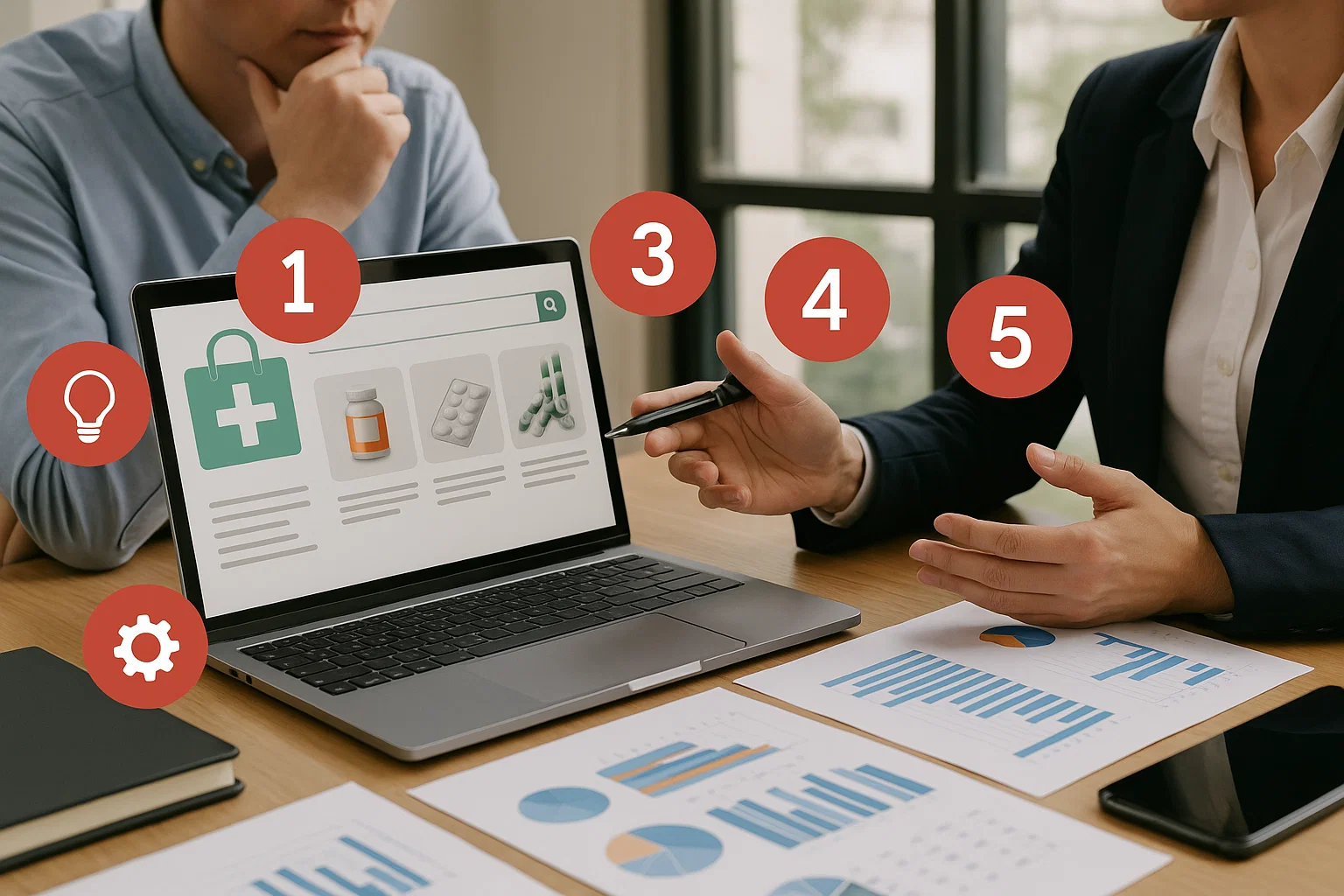Building your own online pharmacy app sounds like a dream come true, right? Endless product listings, 24/7 orders, and that satisfying “ping” every time someone checks out. Startups across India and beyond are lining up to launch the next big Netmeds clone, riding the digital healthcare wave. But here’s the not-so-fun part — most crash before they even leave the startup ICU.
You don’t need a stethoscope to spot the symptoms. Rushed launches, clunky UX, and compliance chaos are just a few of the self-inflicted wounds. I’ve seen founders go from “This is the next Netmeds” to “What went wrong?” faster than a one-click checkout.
So before you pour your savings into a buggy app and some expired vitamin C tablets, read this. We’ll unpack the most common missteps startups make while building a Netmeds-like online pharmacy platform, and show you how to sidestep them like a pro. At Miracuves, we’ve helped digital health startups build reliable, scalable pharmacy apps that don’t just work — they win.
Mistake #1: Skipping Regulatory Compliance Like It’s Optional
The Reality Check No One Likes to Talk About
Here’s the deal — online pharmacies live and die by regulations. In India alone, you’re looking at the Drugs and Cosmetics Act, IT Act, and guidelines from the Central Drugs Standard Control Organization (CDSCO). Miss a beat, and you’re on the legal chopping block.
Some startups assume that slapping a “we are not responsible for…” disclaimer in the footer is enough. Spoiler: it’s not. You need drug license validation, e-prescription handling, and verified pharmacist onboarding — just like Netmeds, PharmEasy, or Tata 1mg.

Also Read :-Best Netmeds Clone Scripts in 2025: Features & Pricing Compared
Mistake #2: Treating the User Experience Like an Afterthought
“It’s Just a Pharmacy App” Said No User Ever
Your user isn’t just buying medicine — they’re often sick, stressed, or confused. And if your UI is a maze of categories, your cart bugs out, or your support bot ghosted them? That’s a one-star review with a side of uninstall.
Netmeds and its rivals obsess over UX for a reason. Think smooth onboarding, smart filters (allergy-safe, sugar-free, age-specific), and instant support. If your app looks like a 2010 blog, users will bounce faster than a toddler on Red Bull.

Mistake #3: Ignoring the Monetization Matrix
No Plan, No Profits — Just Pain
If your idea of revenue is “we’ll figure it out later,” you’ve already lost. Whether it’s commission on product sales, subscription models, or affiliate cross-selling (like lab tests or wellness consults), your monetization strategy should be part of the MVP, not an afterthought.
Netmeds makes money through product margins, branded partnerships, and services. You should too. Think discount-based upsells, wallet features, priority shipping charges — the whole grocery basket of options.
Learn More :-Reasons startup choose our netmeds clone over custom development
Mistake #4: Building from Scratch Instead of Using Scalable Clones
Why Reinventing the Pill is a Bad Idea
Let’s get honest. Coding a full-fledged pharmacy app from scratch sounds sexy — until you’re six months in, knee-deep in bugs, and still don’t have a working search bar.
Clones aren’t cheats — they’re launchpads. Miracuves offers ready-to-customize Netmeds-style app solutions that cut time-to-market by 70%, with all the essential bells and whistles baked in: product catalogs, user profiles, cart logic, payment gateways, and role-based dashboards.
You’re not buying a shortcut — you’re buying time, money, and peace of mind.

Mistake #5: Underestimating Backend Infrastructure & Scalability
It’s Not Just the App — It’s the Engine Behind It
You launched. Great. But then 5,000 users jump in during a flu outbreak and… your app crashes harder than a Windows 98 PC.
Most startups cheap out on backend hosting, fail to optimize databases, or forget about caching, CDNs, and elastic scaling. The result? Downtime, delays, and a lot of angry customers who just wanted their meds on time.
Your Netmeds clone should be powered by cloud-based architecture (AWS, GCP, etc.) with integrated analytics, admin controls, and alert systems.
Read More :-Pre-launch vs Post-launch Marketing for Netmeds Clone Startups
Conclusion
Building a Netmeds clone can be your ticket to startup glory — or a cautionary tale if you fumble the fundamentals. The truth? Most of these mistakes are avoidable with the right partner, the right roadmap, and a reality check or two.
At Miracuves, we help innovators launch high-performance app clones that are fast, scalable, and monetization-ready. Ready to turn your idea into reality? Let’s build together.
FAQs
Is it legal to build a Netmeds-style app in India?
Yes, but only if you follow CDSCO regulations, get proper licenses, and comply with the Drugs and Cosmetics Act.
How much does it cost to build a Netmeds clone?
A feature-rich MVP typically ranges from $8,000–$20,000 depending on scope. Clone solutions from Miracuves help lower this significantly.
Can I integrate my app with pharmacies and labs?
Absolutely. You can integrate APIs for real-time inventory, diagnostic bookings, and doctor consultations.
What’s the best monetization model for an e-pharmacy app?
A mix of B2C sales, affiliate partnerships, and subscription services (like medicine reminders or health packs) works best.
How long does it take to launch a Netmeds clone?
Using a pre-built solution, you can go live in as little as 6–8 weeks.
What platforms should my app support?
At a minimum: Android, iOS, and web dashboard. PWA (Progressive Web Apps) is a nice bonus too.








